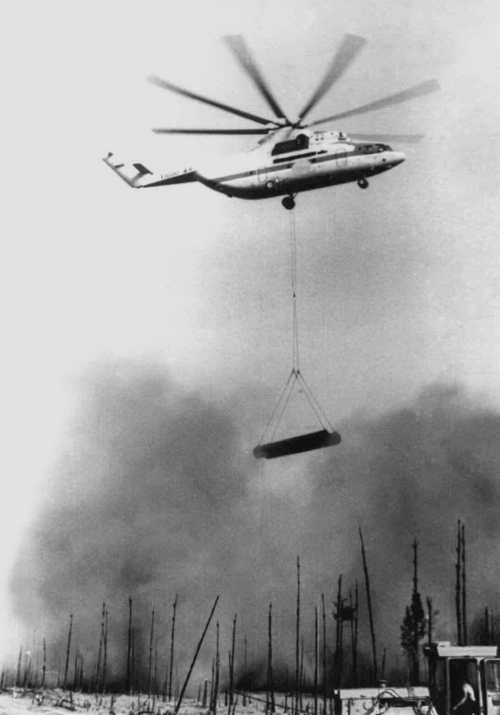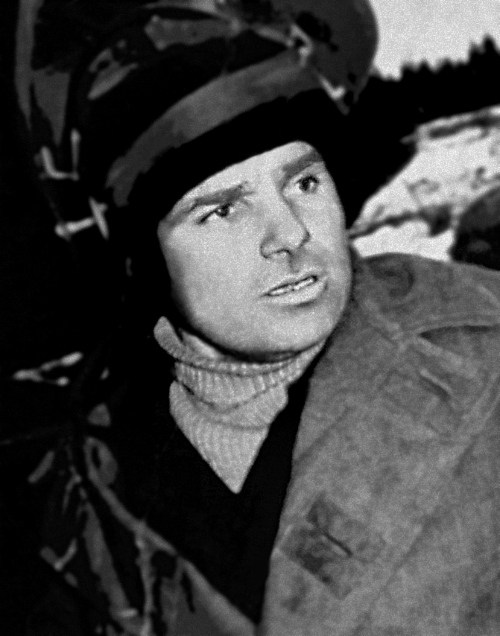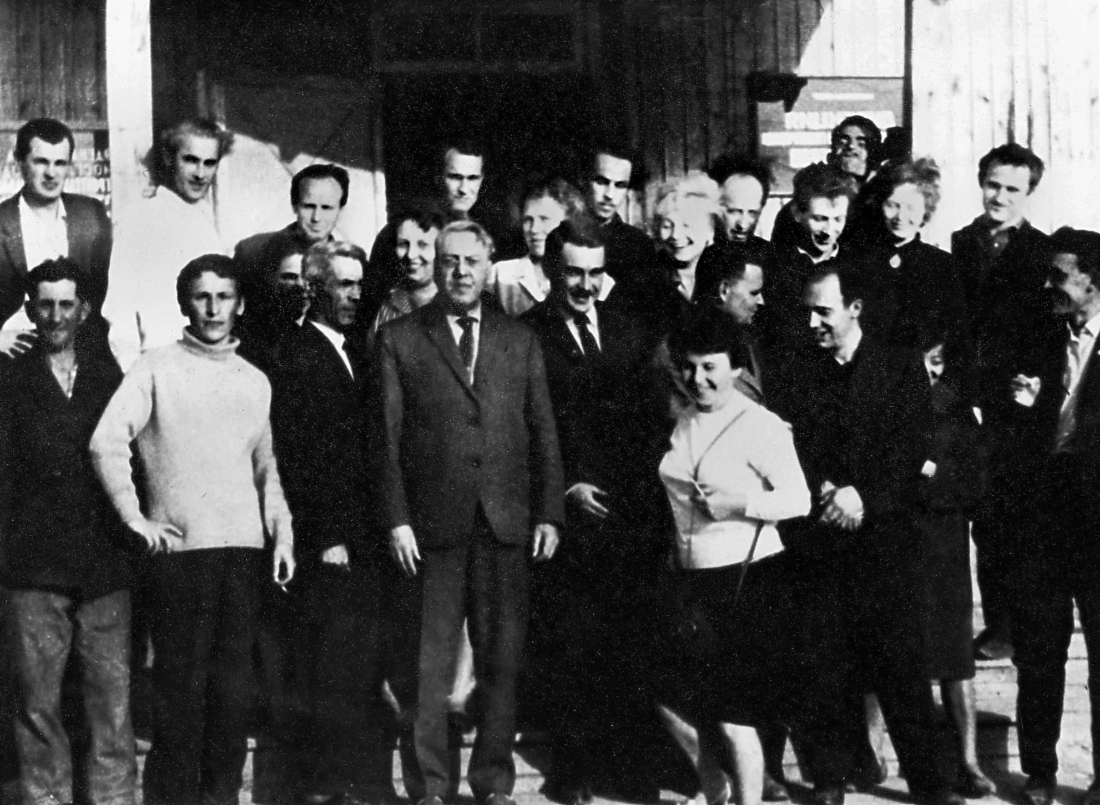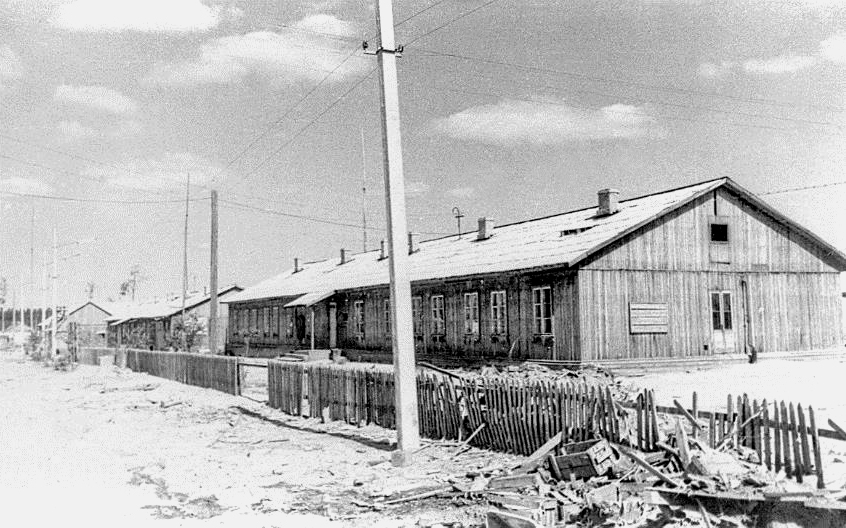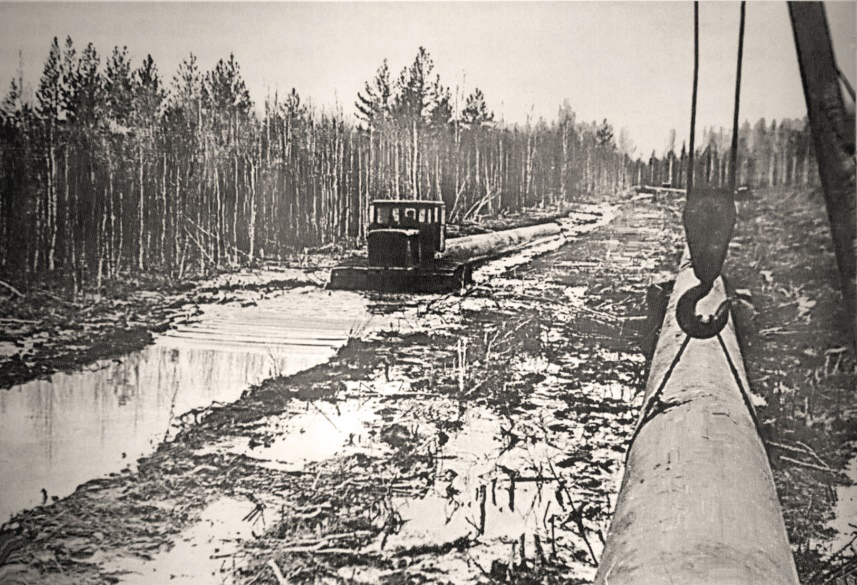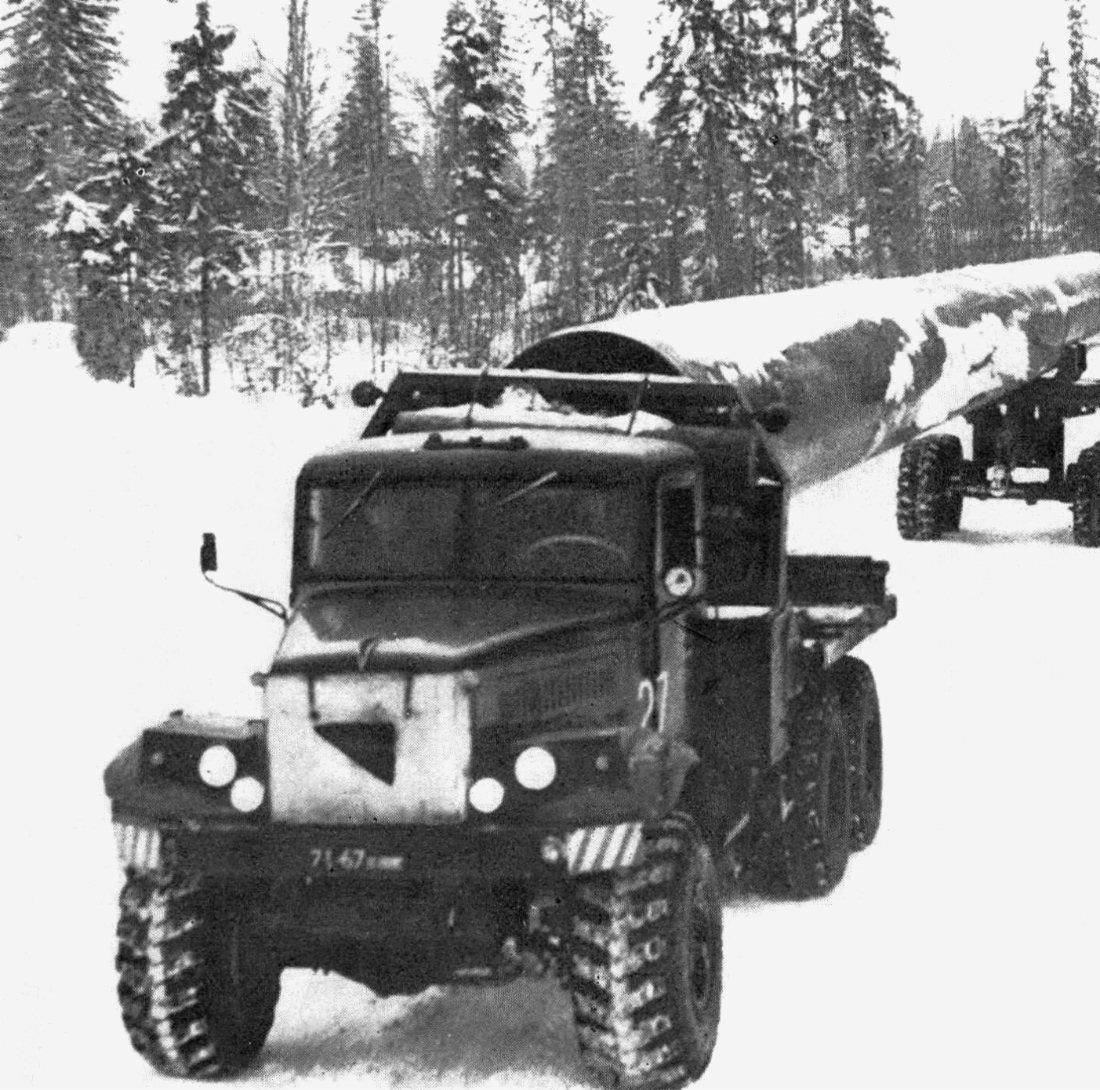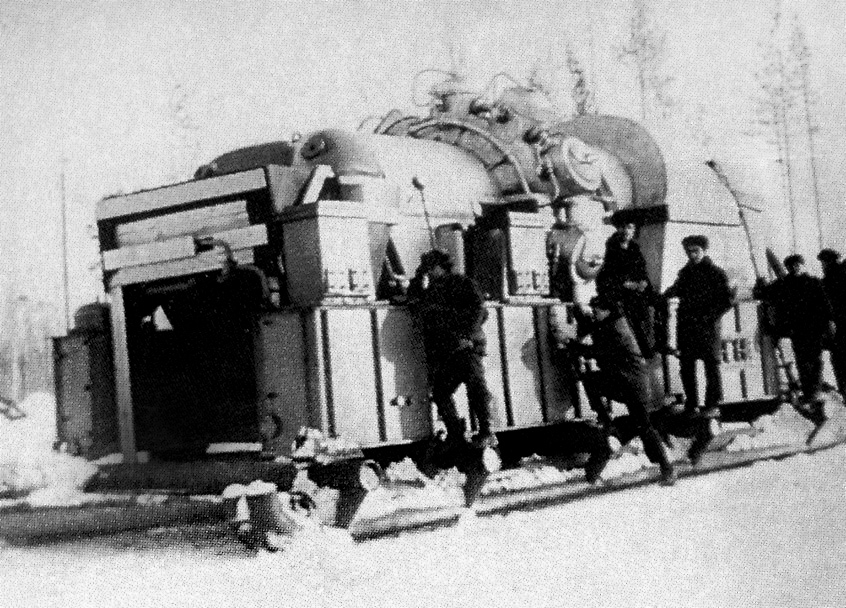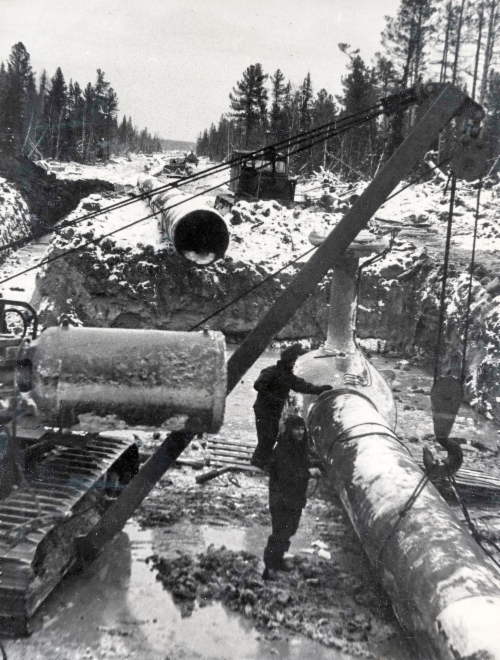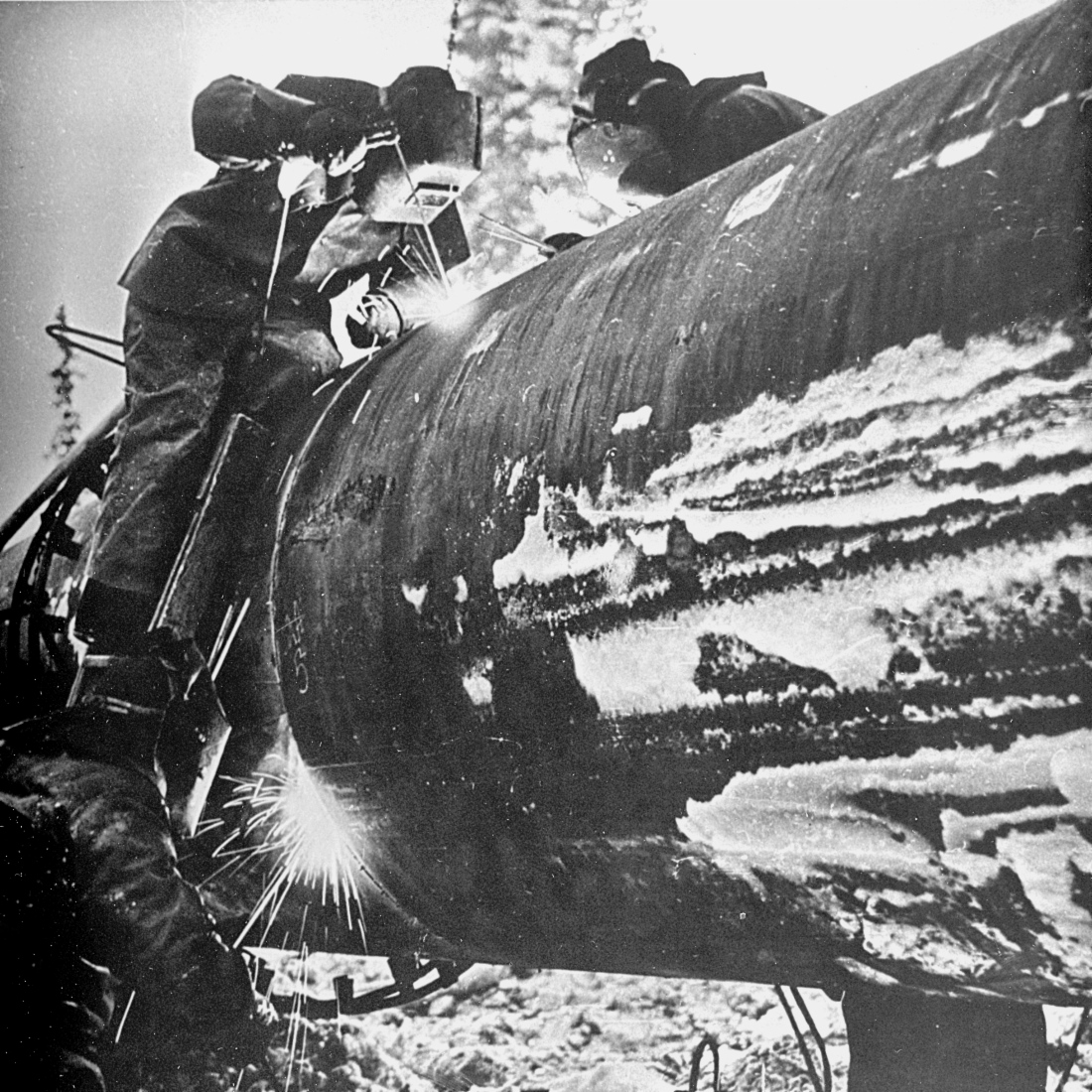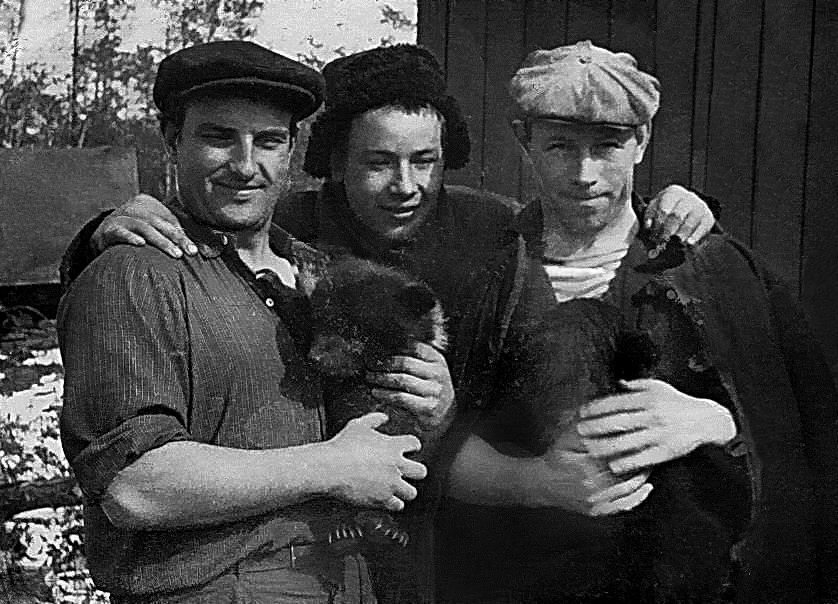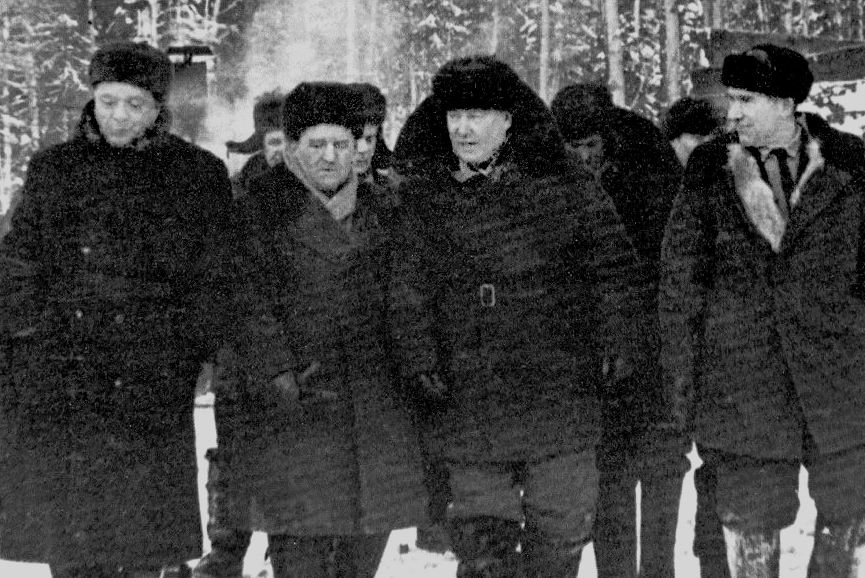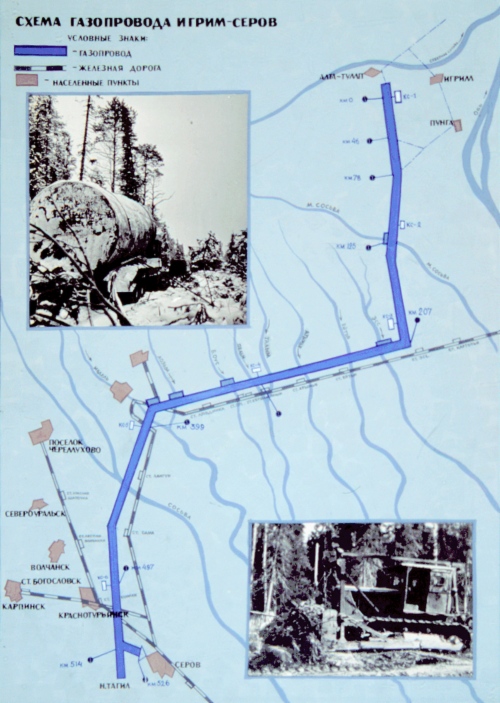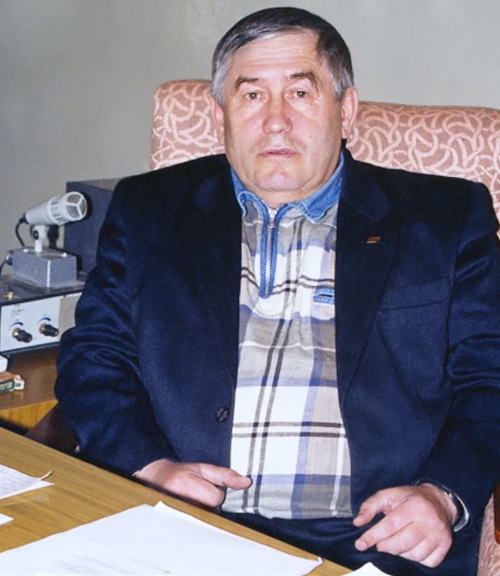50th anniversary of Igrim – Serov gas pipeline
 Overview
Overview Photos
Photos
February 4, 2016
50 years ago, natural gas from the Igrimskoye field was first delivered via a 525-kilometer gas pipeline to the city of Serov, the industrial center of Northern Ural. Soviet gas industry workers gained invaluable experience constructing and operating long-distance gas pipelines in a harsh northern climate.
Gas river’s origin
Just over sixty years ago, quite recently in historical terms, the West Siberian Plain was a pristine area of taiga forest and impassable marshes gradually blending into the forest-tundra and tundra zones closer to the Arctic Circle.
It was an ancient and inhospitable land populated by the Khanty and the Mansi – indigenous minorities of the Finno-Ugric group moving with their herds of reindeer across the tribal areas, hunting and fishing for a living. Only wildlife sounds and mosquito whining broke the taiga silence.
That was until September 21, 1953, when an eerie roar rang through the taiga over tens of kilometers, as a massive gas gusher blew out from the first exploratory well R-1 on the outskirts of the old Siberian village of Berezovo. The well was drilled by an exploration crew headed by Alexander Bystritsky.
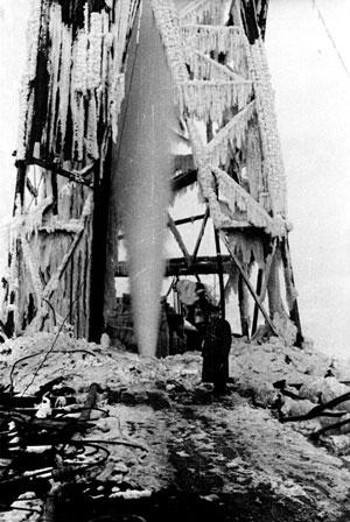
First exploratory well R-1 in Berezovskoye field, winter of 1954
The discovery of gas in Western Siberia was a timely gift for the national economy that was growing rapidly in the postwar years.
In 1959 and 1961, gas gushers were struck in the Igrimskaya and Punginskaya areas respectively. Those fields contained enough gas to start the construction of the Igrim – Serov gas pipeline intended for gas supply to industrial enterprises, cities and towns of Northern Ural.
The first teams of Construction Directorate No. 4 from the Tatnefteprovodstroy trust arrived at the construction site of the future gas pipeline in late 1962. They spent a year installing temporary bases and housing facilities there. New construction sites and storage terminals started to emerge in the Nizhniye Narykary settlement upon the Ob River.
On February 13, 1963, an Ivdel newspaper published a news story entitled “Welding the first seam”: “Yesterday morning the first pipes were welded at the site where the gas pipeline starts. The welding operations were performed by Ivan Sergeev who has been engaged in pipeline construction since 1953. The constructors will start digging trenches in the Ivdel riverbed within the next few days.”
In September 1963, the Igrim – Serov Directorate for Gas Pipelines under Construction was set up in the town of Ivdel. It also served as a customer for the pre-development of the Punginskoye gas field.
In February 1964, the Directorate moved to the Ess settlement (Tyumen Region) subsequently renamed as Komsomolsky (in 1992, the settlement gained the status of a town and was renamed as Yugorsk).
The Directorate, which then included 11 people, among them 7 engineers and technicians, went straight to business. Dmitry Dernovoy, a former military aviator and Great Patriotic War veteran, was appointed as the first head of the Igrim – Serov Directorate.
In 1954, he graduated from Grozny Oil Institute and worked his way from an oil pumper to the Chief Engineer at a gas field developed by the Stalingradgaz trust. Later on, he was promoted to the head of Bukharaneftegaz. In 1963, Dmitry Dernovoy was put in charge of the Igrim – Serov Directorate for Gas Pipelines under Construction. Hardened by the war and extensive practice at construction sites in Bukhara, Gazli, Gorky and Cherepovets, he brought a wealth of experience with him when he arrived in the North. But he had much to learn there as he had no experience of constructing pipelines through many kilometers of marshes.
Forty-five years later, Dmitry Dernovoy recalled: “I started with recruiting people who could easily overcome any difficulties and devote themselves exclusively to work. Of course, I selected professionals who knew their business, starting with tractor and car drivers, electric and gas welders, mechanical technicians, engineers, and foremen. Besides, each of them would have a strong romantic spirit. I needed those who were willing, like on the frontline, to get up and to go over the top, in spite of the frost, rain or hunger. Those true patriots knew how important that gas was for the country – as cheap fuel for factories, power plants, and boiler houses, as a product for chemical industry development. They were proud to be the first to harness the nature of Western Siberia. They knew that their dugouts and trailers would soon be replaced by comfortable settlements, towns, and cities with motorways and railroads. I was lucky to be a living witness and contributor to turning those dreams into reality.”
Construction materials and equipment were shipped on the first winter roads built over frozen marshes and rivers. The necessary equipment was supplied to the gas pipeline under construction and the Punginskoye field from Omsk. It was transported by the Irtysh and Ob Rivers to Narykary and further along the winter road to Punga or by rail to the Ess settlement and then along the winter road by tractors.
In March 1964, the first batch of 1,020-millimeter pipes was delivered and 12 kilometers of the pipeline were welded near the Lozva River, the Pelym and Pionersky settlements. The Mosgazprovodstroy trust assumed the role of a general contractor.
In April, insulation and pipe laying operations started and the pipeline’s length reached 253 kilometers by late 1964.
In addition, the newly established Igrimgaz gas production center started drilling its first production well 516 at the Punginskoye field in the most extreme conditions.
The follow-up exploration of the Berezovskoye field revealed that its gas reserves were not sufficient for a gas trunkline. In contrast, the Punginskoye field (60 billion cubic meters in gas reserves), brought into production in 1966, turned out to be the most prolific in the Igrim group of fields and came onstream first. The Severo-Igrimskoye and Yuzhno-Igrimskoye fields started to produce gas in 1969.
The year 1965 saw the startup of the first-stage production facilities at the Igrim – Serov gas pipeline, the gas distribution station in Serov and the Punginskoye field facilities scheduled for commissioning in the first quarter of 1966.
As the commissioned facilities had to be further operated, their construction progressed simultaneously with the setting up of the Northern Ural Line Pipe Operation Center in 1965. Dmitry Dernovoy was the first to lead the Center after transferring his authority as head of the Igrim – Serov Directorate to Anatoly Muzychenko.
The first cubic meters of the blue fuel were delivered from the Igrimskoye field to the city of Serov (Sverdlovsk Region), the industrial center of Northern Ural, via the 525-kilometer Igrim – Serov gas pipeline 50 years ago on February 4, 1966.
The northernmost gas pipeline of the USSR was commissioned ahead of schedule at a festive ceremony.
Here is what Valery Lenev, veteran of the gas industry, recalled about the Igrim – Serov pipeline commissioning: “It just so happened that I unwittingly went down in history: I got to feed gas to the industrial region of Ural via Igrim – Serov, the first gas pipeline of Tyumentransgaz in the winter of 1966. I was at a block valve station at the 110th kilometer then, as far as I remember. I have never told anyone this before, but no one actually cared to know. If I had known then what it would result in, I would have put down all the details. But there was no time to think about fame in those days, and no one knew what it really was. Besides, we had a lot of work to do. Our major task was to ensure safe and reliable operation of the gas pipeline, and, therefore, it was necessary to service block valve stations in a timely manner, lay down the pipes which came to the surface and respond to pipeline ruptures and holes.”
The Serovsky Rabochy newspaper issued on February 5, 1966, published a front-page story that said, “Yesterday a long-awaited guest – natural gas from the Igrimskoye field – arrived in our city! The blue fuel travelled the distance of over 500 kilometers through the taiga, marshes and rocks, across the rapid rivers of Ural. The huge efforts of professionals engaged in the Igrim – Serov gas pipeline construction ended in a great victory.”


